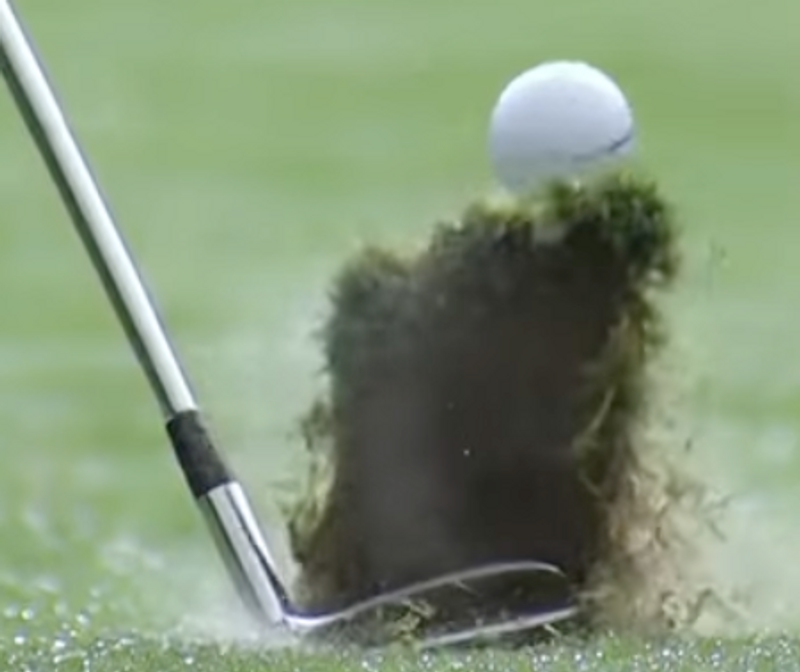I was on YouTube the other day and I stumbled on a video where Tiger Woods said to Scottie Scheffler:
When I'm flushing it, I don't take divots
But if you've watched this game long enough, you know Tiger takes some serious divots:

Now, I'm sure there are some "Tiger mind games" going on here. I don't think he's being serious.
But this is worth talking about.
Should you be taking a divot?
Or is it better to "pick" the ball off the ground?
What causes a divot?
In short, a divot happens when the golfer properly maintains a flat lead wrist through impact and strikes the ball before the low point of his/her golf swing.
If that explanation doesn't satisfy you, I suggest reading my post on the inclined plane.
Here are some factors that affect divot size and shape:
- Divot size
- Ball position (back in stance, bigger divot)
- "Flipping" the hands
- Swaying in the golf swing (causes low point to move)
- Sidehill lies
- Choking up or down on the club
- Knee bend in the downswing and through impact
- Divot shape
- Sidehill lies
- Lie angles
- Your posture and distance from ball at address
Different clubs, different divots?
Shorter irons will produce larger divots while you'll "pick" the ball off the turf with fairway woods and drivers.
Why?
As you move from short iron to driver, the following two factors are changing:
- The inclined plane you swing on gets shallower as the club gets longer (i.e. higher dispersion left and right)
- Your ball position moves forward as the club gets longer (i.e. you contact the ball later in your swing arc, closer to the low point)
In other words, as the club gets longer, your setup is causing a smaller divot.
The takeaway here? Don't try to take different sized divots. Let your setup and club do the work.
You're the detective and your divot is a clue
During the early days of learning the game, I was devastated for months because I couldn't take a divot. I saw all the pros doing it, yet when I would hit, even a skilled forensics expert wouldn't be able to tell I had been on that golf course.
I was obsessing over the effect and not addressing the cause.
Rarely if ever should you be actively focusing on taking a divot.
Instead, treat your divots as clues that tell you things about your golf swing. While I can't go through every scenario, let's look at an example.
Let's say your divots are "toe heavy" (thicker grass near the toe of your iron).
In this case, you could conclude a few possible things:
- The ball was on a side slope
- Your lie angles are too flat
- Your hands are too high at impact
While a divot can be a useful clue, don't go running to the golf store every time your divot shape changes. That said, pay attention to patterns over time. Do you consistently take "toe heavy" divots with all your irons? If so, you might consider adjusting your lie angles. Are you digging up the golf course and hurting your wrists on every swing? Well, you might want to put the ball more forward in your stance and level out those shoulders through impact.
There are infinite cause/effect relationships here, but as the detective of your own game, pay attention and see what you can find!
Repairing divots (the grass type matters!)
Before I let you get on with your weekend, let's talk about a boring but important topic.
If you're not already in the habit, repairing your divots is an easy way to care for golf courses you play (not just your home course!). Depending on the grass type you play on, repairing divots will be a bit different. If you're unsure, just ask someone in the pro shop!
- If you play on bent grass fairways, pick up your divot and place it back where your ball was
- If you play on zoysia or bermuda fairways, fill your divots with sand (usually in the cart)
So this is your reminder to be a good golf course citizen and repair those divots!
And with that, I'll see ya next week.
Hit 'em straight!
